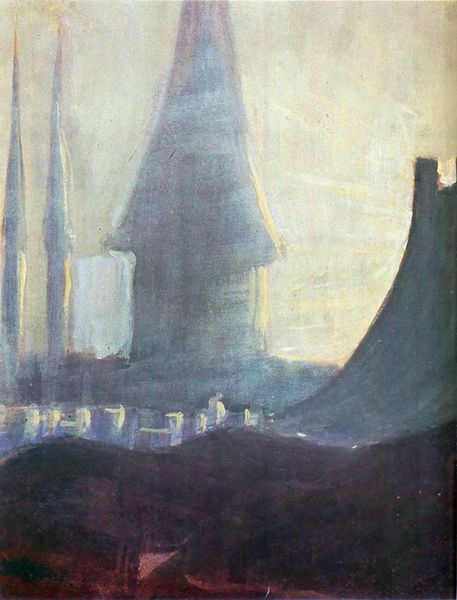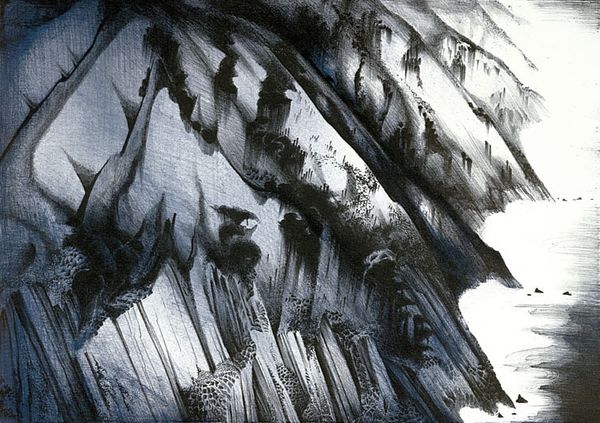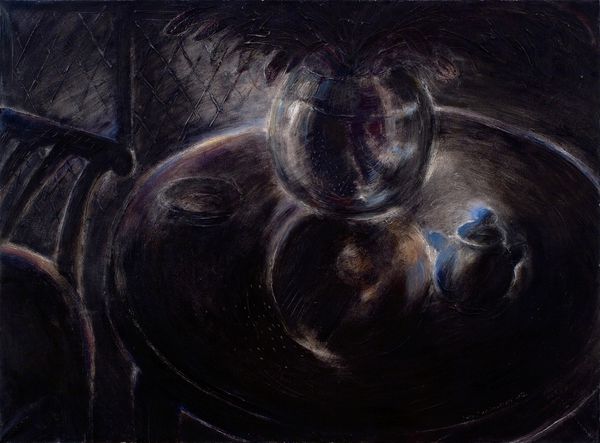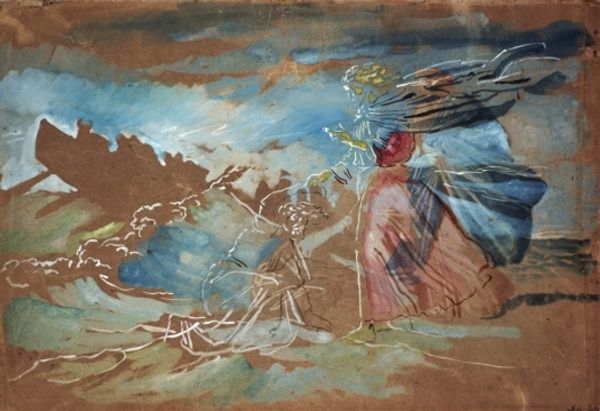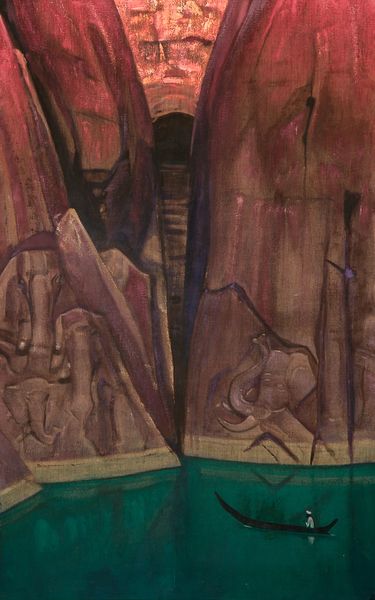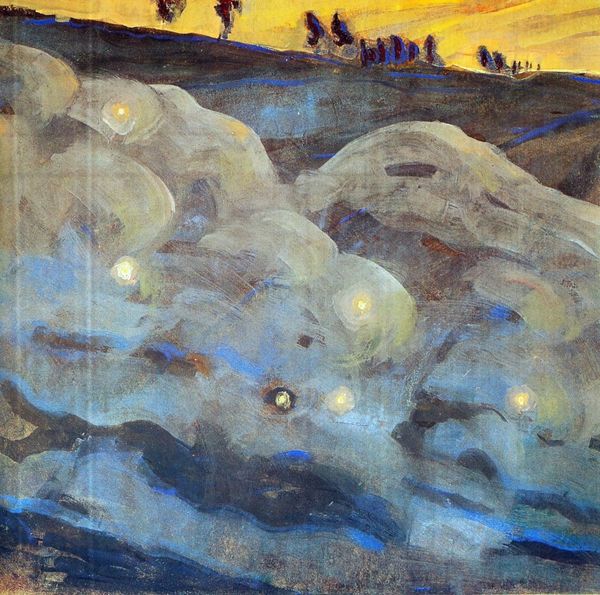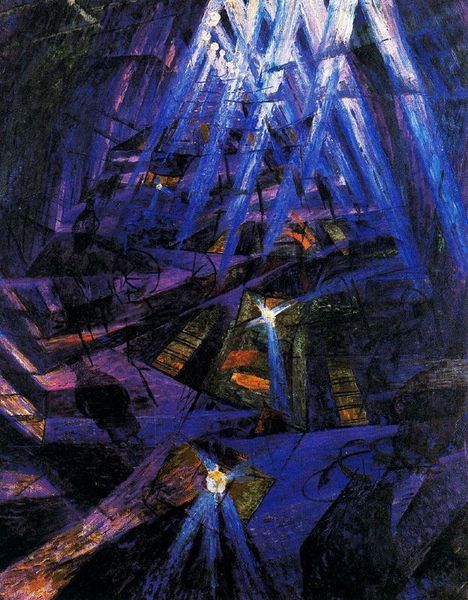
painting, oil-paint
#
painting
#
oil-paint
#
landscape
#
form
#
geometric
#
line
#
cityscape
#
modernism
#
futurism
Copyright: Public domain
Editor: This is Luigi Russolo's "Solidity of Fog," painted in 1912 with oil on canvas. The scene is dominated by cool blue tones and geometric shapes. It definitely feels cold and almost suffocating. What can you tell me about the symbolism here? Curator: The all-encompassing blue and the geometric fracturing, particularly those concentric circles radiating from the top, evoke a powerful sense of confinement, of being enveloped. How does that sensation translate into a commentary on modernity, do you think? Editor: It feels like a loss of individual identity within an industrialized urban landscape. Curator: Precisely! Consider how fog itself operates as a symbol – it obscures, distorts, and unifies everything it touches. What is the cultural weight of depicting modernity this way, do you think? The symbol of fog and anonymity suggests a breakdown of individual experience. Note how the figures are blended, abstracted, into that solidity. It's not just about seeing; it is about feeling, smelling, even tasting this solidity. Editor: I never thought about it that way, I see now how the choice to limit the palette to mostly blue amplifies that suffocating, almost melancholic mood. Curator: Yes, this is more than just a landscape. It reflects a psychological state. It’s a very potent symbolic representation of urban anxiety during the rise of Futurism. The geometric shapes aren't simply about form; they’re about deconstructing a sensory experience of industrial life. What’s really remarkable to me is how he captured this sense so viscerally. Editor: That’s a great insight. I’ll never look at fog the same way again! Curator: And I hope that seeing is more than just looking but experiencing through symbolism, continuity, and cultural memory.
Comments
No comments
Be the first to comment and join the conversation on the ultimate creative platform.


